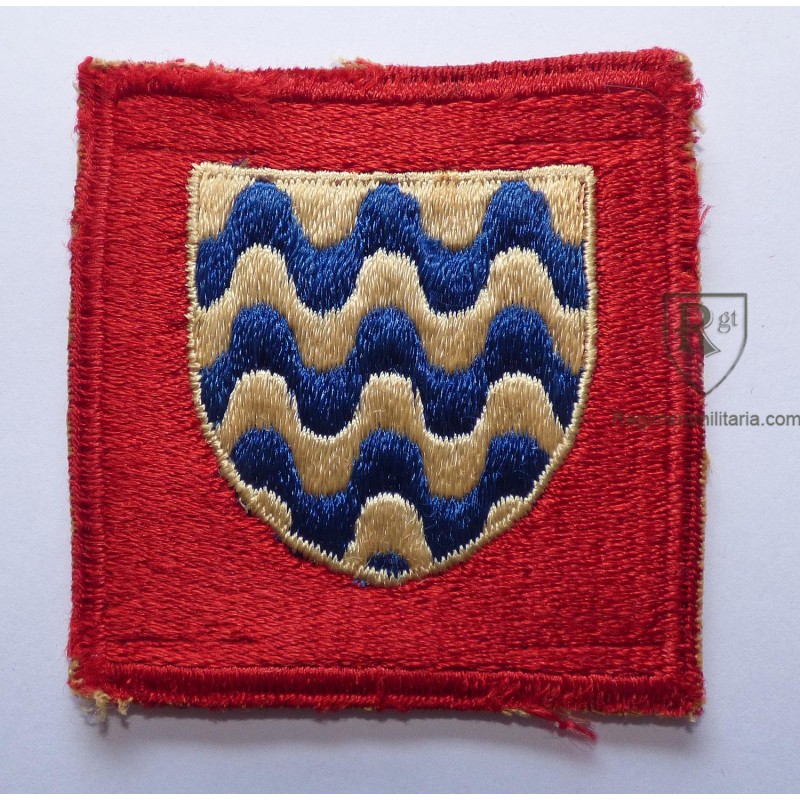

Banner

Banner




15th Army group patch
 Garanties sécurité
Garanties sécurité
(à modifier dans le module "Réassurance")
 Politique de livraison
Politique de livraison
(à modifier dans le module "Réassurance")
 Politique retours
Politique retours
(à modifier dans le module "Réassurance")
Genuine WWII shoulder sleeve insignia of the 15th Army Group.
The 15th Army Group was activated in 1943 in Algiers, North Africa, to plan the invasion of Sicily, codenamed Operation Husky. Its primary forces for this task were the U.S. Seventh Army, under Lieutenant General George Patton, and the British Eighth Army, under General Bernard Montgomery. After the capture of Sicily, the Army Group became responsible for the invasion of mainland Italy, for which the U.S. Seventh Army was replaced by the U.S. Fifth Army, under Lieutenant General Mark Clark. In January 1944, the Army Group was redesignated successively Allied Forces Italy and then Allied Forces Central Mediterranean.
In March 1944, the Army Group was redesignated Allied Armies Italy. Throughout this period, the Army Group was under the command of British General Sir Harold Alexander. By late 1944, the Army Group had pushed north through Italy, capturing Rome and driving the retreating Axis forces into northern Italy. Despite and because of the rapid advance of Allied forces in Italy in June–July 1944, after the liberation of Rome, the Allied High Command in Western Europe decided to withdraw the French Expeditionary Force and the U.S. VI Corps from the Italian front, reassigned to land in southern France in support of the advance in northern France, and to liberate southern France, including the huge port complexes of Marseille and Toulon, and to bring into action the seven divisions of the French First Army (1st and 5th Armored, 1st, 2nd, 3rd, 4th, and 9th Infantry) that had been re-equipped in French North Africa by the United States. The gap in the ranks of the US Fifth Army caused by the withdrawal of seven divisions (three US Army, the 3rd, 36th and 45th Infantry Divisions; and four French, the 1st, 2nd, 3rd and 4th Divisions) was filled in 1944–45 by five US Army divisions (10th Mountain, 85th, 88th, 91st and 92nd Infantry Divisions) and one US-equipped Brazilian Army division (the 1st). Additional replacements and service elements were provided by the conversion of the US Army's 2nd Cavalry Division, which had arrived in theatre in 1944. [2]
To complicate Allied ambitions in Italy, between October 1944 and March 1945, available British forces were also weakened by the disbandment of the 1st Arnoured Division due to a lack of replacements for the Eighth Army's losses, and the withdrawal and deployment to Greece of two British infantry divisions (4th and 46th), the British-controlled 4th Indian Division, the British 23rd Armoured Brigade, the British 2nd Parachute Brigade and the Greek 3rd Mountain Brigade. In addition, the 1st Canadian Corps and the British 5th Infantry Division were withdrawn and redeployed to northwest Europe under Operation Goldflake, to make up for British and Canadian losses in France and Belgium in 1944. The British and Canadian divisions that were withdrawn to consolidate the 21st Army Group took advantage of the ports in southern France liberated by the US Seventh Army and the French First Army in Operation Dragoon. The new gaps on the Italian front were filled by four Italian "battle groups", each equivalent to a "light" division (two brigades) under the British table of organization and equipment, additional American troops (detached from forces in France or converted from army-level cavalry and anti-aircraft units), and an additional brigade composed largely of infantry recruited from the British Mandate of Palestine. [3]
In December 1944, U.S. Lieutenant General Mark Clark became the new commander and the Army Group was redesignated the 15th Army Group once again.
After the final breakup of the Gothic Line, the Axis forces in Italy were finally defeated in the Army Group's Spring Offensive, with their surrender occurring on 2 May.
On 5 July, the 15th Army Group was reorganized and redesignated U.S. Occupational Forces Austria. The headquarters of II Corps Company, 11th Armored Division, 42nd Infantry Division, and 65th Infantry Division, previously assigned to the U.S. Third Army and 12th Army Group, were assigned on 6 July to the newly formed U.S. Occupational Forces Austria, with General Mark Clark as commanding general.
Reference: U2U187
Reference: U2E878
Reference: U2E739

15th Army group patch
check_circle
check_circle